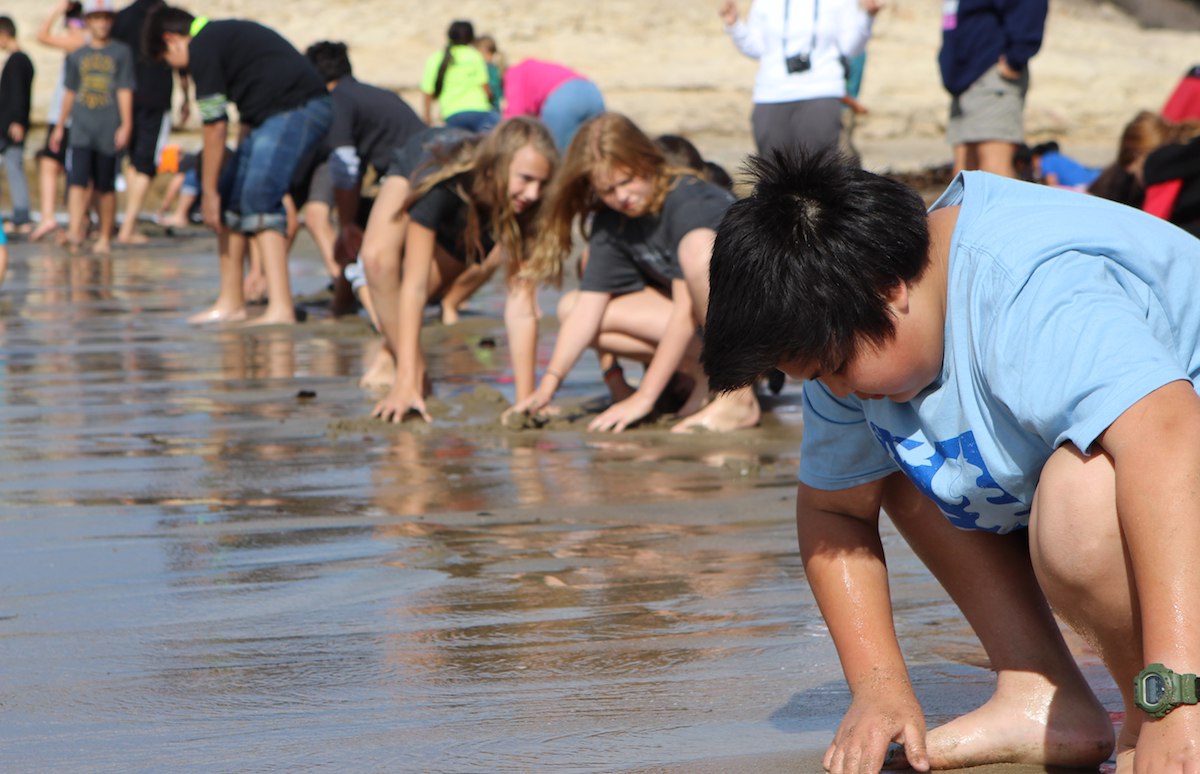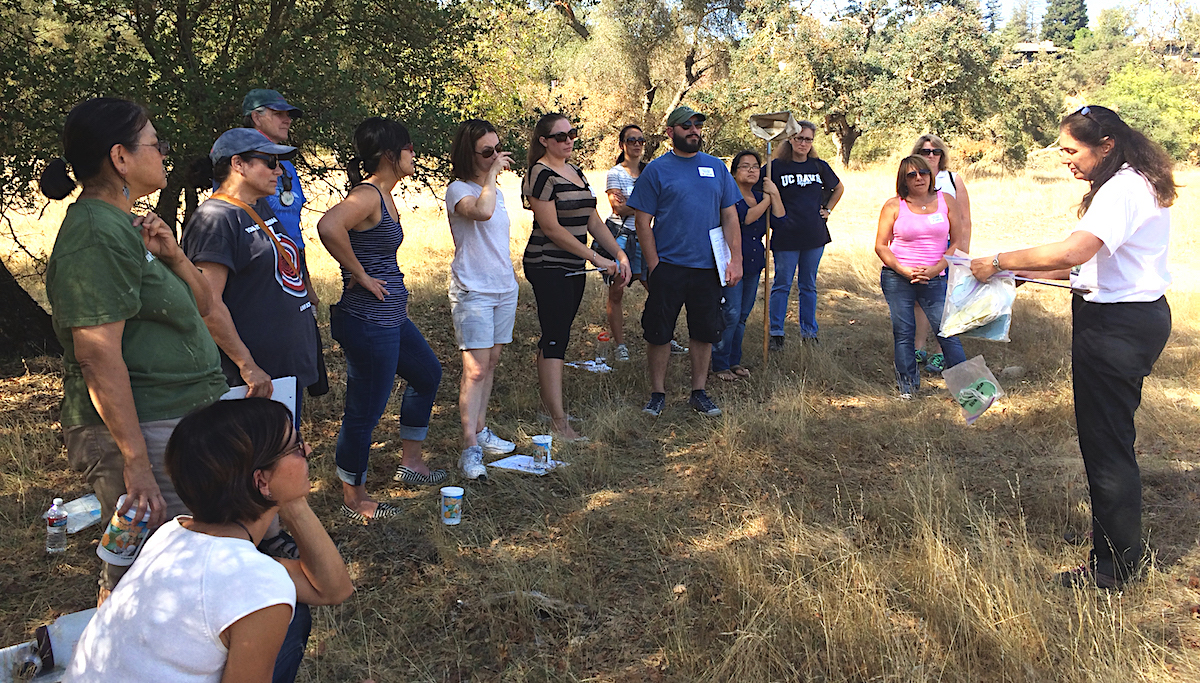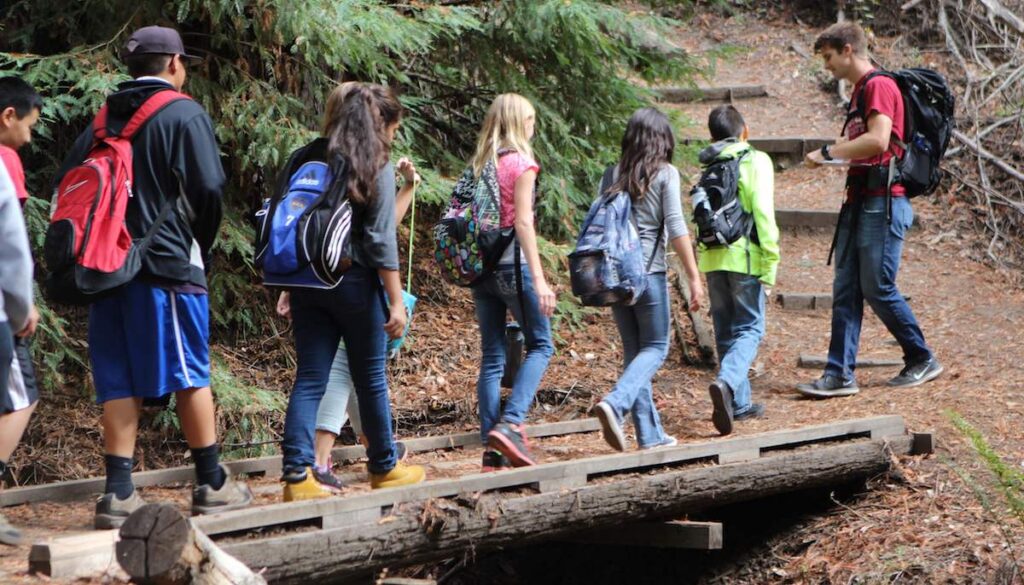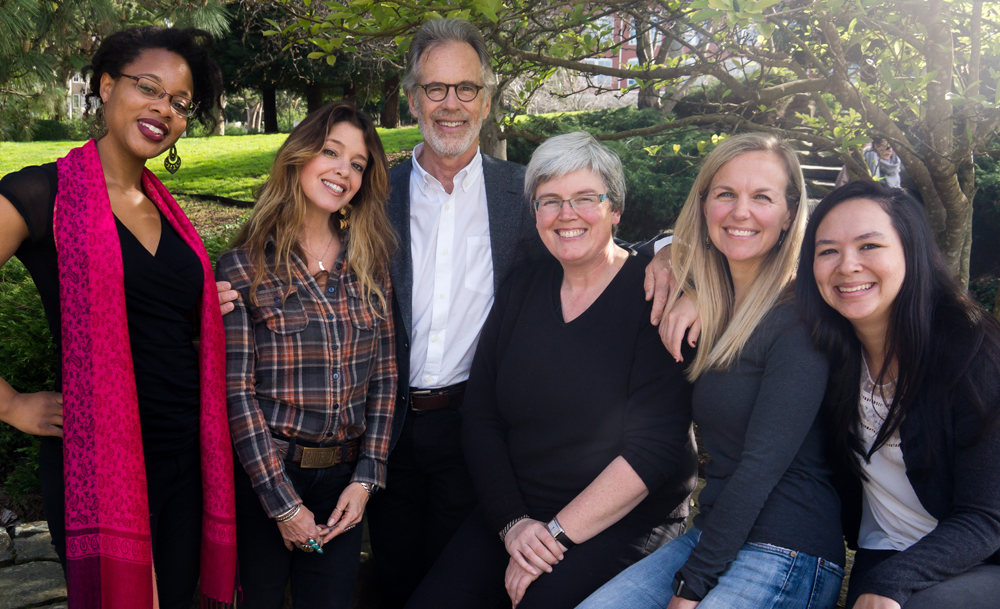An Interview with Will Parish
Will Parish is a credentialed public high school science educator with a 30-year record of innovative accomplishments in the environmental and educational fields. He taught environmental science and civics at Gateway High School in San Francisco, and now serves on their board. He served on the California State Board of Education’s Curriculum Commission and then founded Ten Strands as a nonprofit organization to support California’s efforts to achieve statewide penetration of high-quality environment-based education into schools.
What made you decide to move from the private sector to teaching?
At age 49, I took stock of my life and wanted my next professional move to combine the best and most enjoyable things I had done up to that point. When I thought about being a lawyer, being a pilot advocating for awareness of forest clear-cutting, advocating for renewable energy through alternate energy projects, I had a realization—I enjoyed the education aspect of those jobs. So I decided to become a teacher. In 2002 Governor Davis announced the need for 28,000 new teachers. What caught my attention was that you could start teaching without a credential as long as you enrolled in a credentialing program.
Were you focused on developing environmental awareness in your students from the very start of your teaching career, or did that happen along the way?
From the beginning the idea was to get kids interested in the environment so they would feel inspired to take better care of it. I was hired by Gateway High School to redesign the environmental science program to move away from lab science and toward a human-centered focus. It allowed me to bring in some legal aspects, some advocacy and business experience, and some of my experimental, fun side.
What was your perception of students’ general awareness or interest in the environment? Were they already thinking about this subject to any extent?
Through surveying of my students’ knowledge prior to teaching each unit, I discovered that some students thought electricity just emerged from a wall. Some had no idea how pollution from human activities affected ecosystems. Most students were naturally curious about the environment, but I wanted all of them to be aware and interested.
I found that the more I took my students outside to explore—birds, worms, grass, runoff and erosion—and show them concentrated solar energy by using a Fresnel lens to burn the weeds, explore how solar panels power a small fan so strong that it could cut paper, and take them to Golden Gate Park’s Lilly Pond using public transportation, the more they learned.
What kinds of strategies did you discover that could be depended on to engage student interest? Were there particular “big ideas” or concepts that you found could hit home time and time again?
The biggest thing I wanted students to walk away with was that humans can have a beneficial impact on the environment. Everything in the news about global warming, pollution, and sea level rise, that’s one side of the story. But humans have incredible ingenuity. Given the knowledge that something has gone wrong, we are very resilient and capable of solving problems. That message was easily understood when connected to alternative energy and getting electricity from the sun or the wind.
How important is it for schools to help students understand the environmental impacts of the choices they make in their personal and professional lives?
I think it’s crucial. Learning how to interact appropriately with the environment makes all the sense in the world. Public schools provide the greatest leverage to educate a critical mass of people to address the environmental challenges that are here today, those that are coming our way, and the need to find solutions. Educating students who will come up with solutions to those problems should be a goal of the public schools. Cultivating critical thinkers, conveying civic mindedness, and teaching students the skills needed to be successful in the 21st century is extremely important.

What kinds of new opportunities became available to you when you were on the Curriculum Commission?
The biggest opportunity was the idea of influencing youth outside of my environmental science classroom. When I started on the commission, the first thing that came along was the model curriculum developed as a result of the Education and the Environment Initiative law.
I got to see the process for evaluating potential curriculum to be used in all public schools. It was a big concept for me at the time that there was a body of people who made decisions about what our kids are going to be taught, and that this body was deliberating the best way to integrate environmental literacy into all students’ learning.
I was able to go from the idea of influencing 26 or 52 students a semester to the thought of influencing 6 million students through the public school system, teacher professional development, and everything that goes along with teaching new curriculum.
When Superintendent Torlakson first created the Environmental Literacy Task Force, what was the state of environmental education in the State? What kinds of opportunities were created by the establishment of the task force?
I would say that environmental education in the state was of varying quality and opportunity. Some places were lucky enough to have a museum or science center within field trip distance. But if you look at all 6 million students, not many had exposure to an environment-based education through a science or nature center, organizations like the California Academy of Science, or the Science Center in LA.
With Craig Strang from the Lawrence Hall of Science, and Elizabeth Babcock from the California Academy of Sciences as co-chairs of the Task Force, it was amazing to see how all the members—I think there were 47 of us—saw the advantages of working together to produce a strategy relevant to all California students.
The idea that there could be a classroom component for environmental literacy for all students to learn about their inextricable intertwining with nature made all the sense in the world.
The environment isn’t just a faraway stream, a mountain or a glacier. It’s all around us all the time, and we’re connected to it. It’s the air that we breathe, and the water we drink. It’s the dandelion breaking up through the crack in the asphalt. And it can serve as a great teaching tool once you begin to look at it that way.
A consistent strand in the Blueprint is how teaching through an environmental lens is not an add-on but rather a facilitator for a subject or lesson or concept that needs to be taught. That was the breakthrough: teaching through an environmental lens and through a student’s own local environment complemented by the hands-on learning that happens outside the classroom, even on the blacktop.
What led you to found Ten Strands? Was that a further expansion of everything you’d done up to that point or was there a slightly different perspective on it?
Looking backwards, it makes sense. But at the time, looking forward, I wasn’t quite sure of exactly what the next steps would be. The EEI Curriculum had been out for two years and the CalRecycle folks were doing a good job of getting the curriculum into schools, but I knew there had to be a way to get the material out more quickly. That’s when I decided to stop teaching and set up a nonprofit.
It really was serendipity that brought Karen Cowe and me together. She had classroom teaching experience, and had been the CEO of an educational publishing company. Ten Strands was founded with the purpose of getting the EEI Curriculum out to as many schools as possible. It transformed into much more than that, into what it is today. By observing the needs of the system, we got to know the system better. At one point, Karen and I looked at each other and we said, “Well, as good is this curriculum is, it won’t achieve the goal of environmental literacy for all in California. We have to do much more.”
That’s when we began to strategize other ways to help reach that goal. When Tom Torlakson set up the Environmental Literacy Steering Committee, it was the perfect venue for us to join forces with other people thinking about these same things. The Blueprint created by the Task Force includes highly strategic initiatives that need to happen for environmental literacy to take hold at all levels within the education system in California. Ten Strands’ mission evolved to wrap around what the Blueprint was calling for in terms of achieving environmental literacy for all students—all demographics, all ethnicities, in all parts of the State.
What was next for the task force?
Unlike many other task forces, the co-chairs insisted that there be a steering committee to implement its recommendations. Craig Strang and I were selected as the co-chairs, Karen as the Project Director. Together with Tom Torlakson and other leaders at the California Department of Education, we built a steering committee including other state agencies and stakeholders who have expertise in the priority areas.
The Steering Committee is guided by a theory of action that is driven by four things: 1) We want to scale this work to reach the 300,000 teachers and 6.2 million students in California; 2) We want to make sure equity and cultural relevance frame everything we do; 3) We believe that school districts are the unit of change; and 4) We believe that now is the time to move this work forward with a supportive Governor and State Superintendent.
We think of this theory of action as having three categories of activities:
The first is to build and strengthen a supportive context for environmental literacy. That includes activities and initiatives like the 2003 Education and the Environment Initiative legislation, development of California’s Environmental Principles and Concepts (EP&Cs), the Blueprint for Environmental Literacy, California’s adoption of the Common Core State Standards and Next Generation Science Standards, and the recent revisions of the state’s frameworks in science and history–social science.
The second part is working with existing education initiatives and networks to integrate the EP&Cs, and an approach to learning that uses the environment as context into instructional materials, professional learning, and assessment.
The third category is to develop leading-edge exemplars of school districts that successfully partner with environmental literacy experts and local environmental education providers to integrate environmental literacy into their district priorities and plans.

Is what California is doing likely to have an in impact on other states?
The answer is an unabashed yes! I think the biggest impact could come from the fact that having the largest number of teachers and students in the country (12% of the US), California has a significant influence on the publishing market. The State Board of Ed requires that the EP&Cs be integrated into the new science and history-social science instructional materials, so what is included in the California materials will likely make it into materials adopted by other states.
There’s proposed federal legislation, the No Child Left Inside Act, that calls for states to write plans on using the educational system to get kids to be environmentally literate tied to possible federal funding. There are already about 26 states with plans. Everybody’s looking at California, Maryland, Oregon, and others to see how teachers are responding to using the environment as context in teaching. So far, the feedback has been really positive.
Also, the North American Association of Environmental Education is pulling some of us from these states together to share best practices and learn how to advance environmental literacy through the combination of in-class learning, and out-of-class and hands-on experiences.
Being as objective as you can, how important is all this work?
Frankly, I believe it is crucial to our survival. As a society, as a nation, as a world, we need to teach students the critical thinking skills needed to alter humanity’s course. We have to move off the destructive path of using fossil fuels and natural resources that damage landscapes irreparably, toward a future that can flourish using environmental resources judiciously.
That sounds so dramatic, but humans have been engaged in practices that are diminishing ecosystems’ capacity to sustain life. The planet has witnessed five extinction events and we humans are creating number six. Industrialized humans have lost connection to nature; we need to understand that we are a part of nature, not separate from it.
I think of environmental literacy as having the capacity to analyze, reason, interpret, and communicate solutions to environmental challenges, whether they’re local or global. Imagine if everybody possessed that level of environmental literacy. It would create a giant pool of potential environmental problem-solvers.
What would they be learning to do? How about producing energy without pollution? How about producing enough food without causing the extinctions of the very things we eat? What about creating jobs and livelihoods in a way that does not destroy or deplete all of our natural resources?
The reason I’ve devoted my life to changing the largest public school system in the country is because I don’t see any other way to educate people that leads support for policies that will actually enhance our capacity to live in a way that doesn’t continue to diminish the planet’s ability to support us.
That’s why I’m doing what I’m doing, and joining forces with other people who see the imperative of solid environmental education to reawaken the need to have healthy ecosystems so we humans can thrive along with all the other species with which we share our planet.


